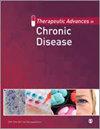Long-term outcomes and associated factors of Crohn’s disease patients achieving transmural healing based on magnetic resonance enterography: a Chinese retrospective cohort study
IF 3.3
3区 医学
Q2 PHARMACOLOGY & PHARMACY
引用次数: 0
Abstract
Background:Transmural healing (TH) has emerged as a potential treatment goal for Crohn’s disease (CD). However, further research is needed to confirm its benefits and risk factors associated with TH remain unclear.Objectives:We aimed to assess the value of TH based on magnetic resonance enterography (MRE) in Chinese CD patients regarding the long-term outcomes and its associated factors.Design:Retrospective, observational cohort study.Methods:Patients with CD diagnosed by colonoscopy and MRE examination between 2015 and 2022 were included. All patients were evaluated with endoscopy together with MRE within 6–12 months after baseline and followed up for at least 6 months after evaluation. The primary endpoint was the occurrence of major outcomes during the follow-up, including drug escalation, hospitalization, and surgery. The cumulative probabilities of major outcomes were calculated using Kaplan–Meier survival curves. Logistic regression analyses were used to predict TH within 6–12 months after baseline.Results:A total of 175 patients were included in the study. Of these, 69 (39.4%) patients achieved mucosal healing (MH), but only 34 (19.4%) of them achieved TH. The median follow-up duration was 17.4 months (interquartile range, 11.6–25.5), and major outcomes occurred in 58.3% of patients. A lower occurrence rate of major outcomes was noted in patients who achieved TH than in those who achieved MH only ( p = 0.012). The baseline lymphocyte/C-reactive protein ratio (LCR) [odds ratio (OR), 1.60; 95% confidence interval (CI), 1.02–2.50; p = 0.039] and bowel wall thickness (BWT) (OR, 0.72; 95% CI, 0.59–0.90; p = 0.003) were independent predictors associated with TH. According to multivariate Cox regression analysis, low LCR [hazard ratio (HR), 2.34; 95% CI, 1.51–3.64; p < 0.001], and no healing (HR, 5.45; 95% CI, 2.28–13.00; p < 0.001) were associated with an increased risk of major outcomes.Conclusion:Patients with CD who achieved TH showed improved prognosis compared to those who achieved MH only. Baseline LCR and BWT might predict TH.基于磁共振肠造影的克罗恩病患者经壁愈合的长期疗效及相关因素:一项中国回顾性队列研究
背景:横隔膜愈合(TH)已成为克罗恩病(CD)的潜在治疗目标。设计:回顾性、观察性队列研究。方法:纳入 2015 年至 2022 年期间通过结肠镜和 MRE 检查确诊的 CD 患者。所有患者均在基线后 6-12 个月内接受内镜和 MRE 检查,并在检查后随访至少 6 个月。主要终点是随访期间发生的主要结果,包括药物升级、住院和手术。主要结局的累积概率采用卡普兰-梅耶生存曲线进行计算。采用逻辑回归分析预测基线后 6-12 个月内的 TH。其中,69 名(39.4%)患者实现了粘膜愈合(MH),但只有 34 名(19.4%)患者实现了 TH。随访时间的中位数为 17.4 个月(四分位间范围为 11.6-25.5),58.3% 的患者出现了主要结果。与仅获得 MH 的患者相比,获得 TH 的患者主要结果发生率较低(P = 0.012)。基线淋巴细胞/反应蛋白比值 (LCR) [比值比 (OR),1.60;95% 置信区间 (CI),1.02-2.50;p = 0.039] 和肠壁厚度 (BWT) (OR,0.72;95% CI,0.59-0.90;p = 0.003) 是与 TH 相关的独立预测因子。根据多变量 Cox 回归分析,低 LCR [危险比 (HR),2.34;95% CI,1.51-3.64;p <;0.001]和无愈合(HR,5.45;95% CI,2.28-13.00;p <;0.001)与主要结局风险增加相关。基线LCR和BWT可预测TH。
本文章由计算机程序翻译,如有差异,请以英文原文为准。
求助全文
约1分钟内获得全文
求助全文
来源期刊

Therapeutic Advances in Chronic Disease
Medicine-Medicine (miscellaneous)
CiteScore
6.20
自引率
0.00%
发文量
108
审稿时长
12 weeks
期刊介绍:
Therapeutic Advances in Chronic Disease publishes the highest quality peer-reviewed research, reviews and scholarly comment in the drug treatment of all chronic diseases. The journal has a strong clinical and pharmacological focus and is aimed at clinicians and researchers involved in the medical treatment of chronic disease, providing a forum in print and online for publishing the highest quality articles in this area.
 求助内容:
求助内容: 应助结果提醒方式:
应助结果提醒方式:


